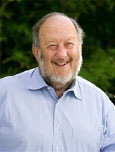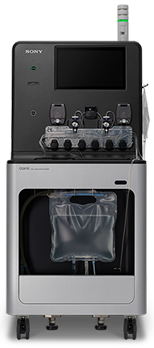Purified HSC: The Path to Blood System Discovery and Regenerative Medicine

Dr. Irving Weissman
Virginia & D.K. Ludwig Professor of Clinical Investigation in Cancer Research,
Professor of Pathology, and of Developmental Biology,
Stanford University Institute of Stem Cell Biology and Regenerative Medicine
Friday May 9th, 2025
12:15 – 1:15 PM CT
Level 1 – Ernest M. Morial Convention Centre, New Orleans, LA
Rivergate Room
The development of multiparameter fluorescence activated cell sorters [FACS] enabled us to identify and isolate mouse HSC in 1988 [Stanford] and human HSC in 1992 [SyStemix]. HSC are rare cells in bone marrow [1 in 100,000 cells] and mobilized peripheral blood [MPB]. HSC are the only cells in a BM or MPB or CD34+ cell transplant that regenerate blood formation for life, requiring both HSC self-renewal and differentiation to all blood and immune system cells. Autologous BM transplants following high dose chemoradiotherapy can regenerate the system, and the HSC contained in the transplants determine the time to recovery and lifetime regeneration of blood formation. Pure autologous HSC transplants from patients with metastatic breast cancer [MBC] are free of breast cancer cells, while BM, MPB, and CD34 cell preparations still contain cancer cells. In a clinical trial initiated in 1996, patients rescued with pure HSC had median survival times [MST] of 10 years, and 33% have OS times of >20 years, while MPB rescued patients had MST of 2 years and by 12 years their PF OS was 0%.
The FACS purification of HSC eliminates T cells, the cause of GVH in allotransplants, while neither MPB nor CD34 preps are T cell depleted. HSC allotransplants do not develop GVH, and the host blood system is largely replaced by donor HSC. This is a basis for regenerative medicine when the host blood is genetically defective or depleted or autoimmune; T cell contaminated transplants give rise to clinical or immunosuppressive subclinical GvH. While autologous HSC could be gene edited, the ability to do pure allogeneic HSC transplants from healthy donors will compete for patients. Pure allogeneic HSC from organ donors induce transplant tolerance but require ablation of both recipient HSC and immune T and NK cells; currently the ablation is by high dose chemo- or radiotherapy, which induces mutations in all body cells, and secondary lethal diseases can develop. We have developed antibodies to deplete HSC, T cells, and NK cells in vivo, and anti-CD47 antibodies to enable macrophages to help deplete cells. In these mice, they are permanently tolerant of HSC donor heart transplants but reject 3d party hearts by 13 days.
The speaker will also discuss the role of HSC in blood disease development and the rejuvenation of a youthful blood and immune system in elderly mice by elimination of a subset of HSCs.
 Dr. Irving Weissman
Dr. Irving Weissman